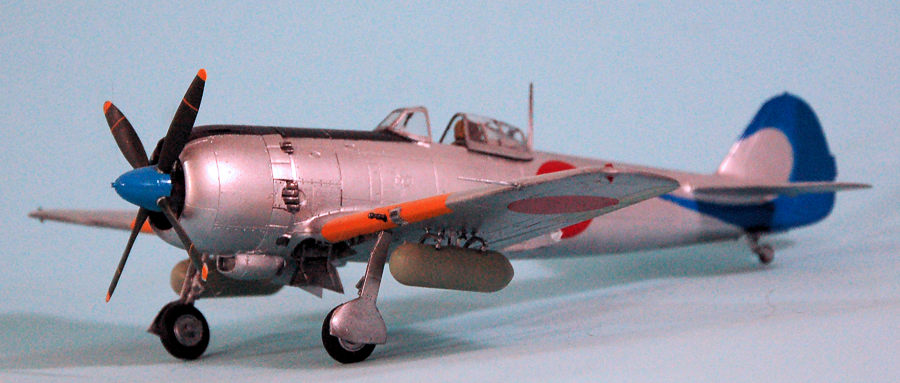
Hasegawa 1/48 Ki-84 'Hayate'
| KIT #: | |
| PRICE: | $27.99 on sale |
| DECALS: | Two options |
| REVIEWER: | Tom Cleaver |
| NOTES: |

| HISTORY |
The Nakajima Type 4 Fighter, given the designation Ki.84 and the name Hayate (“Gale”) by the Imperial Japanese Army Air Force, was the most formidable Japanese Army Air Force fighter of the Second World War, possessing none of the shortcomings of previous IJAAF fighters. It was sturdy, well-armored, possessed of effective and powerful armament, and was later found to be capable of out-climbing and out-maneuvering both the P-51H Mustang and P-47N Thunderbolt, themselves the final line of development of its most formidable opponents. Known as the “Frank” to its Allied opponents, the airplane completely outperformed the F6F Hellcat and could give the F4U Corsair a run for its money. In fact, the only complaint Allied test pilots could come up with once they got their hands on the airplane was that the brakes were poor, fading under hot conditions and requiring that the airplane be flown off grass strips for maximum safety in landing. Like all thoroughbreds, the Ki.84 was amendable to adaptation, serving equally well in the roles of high-, medium-, and low-altitude interception, as well as close-support and dive bombing. Given that at a distance it resembled the earlier Ki.43, an inattentive Allied pilot could be in for a nasty shock when he closed on the “easy target.” At medium altitudes, the Ki.84 was so fast it was essentially immune from interception. During the Okinawa campaign, defending American fighter pilots would frequently hear from their ground control, “Forget it. It’s a Frank.”
Development was initiated just three weeks after Pearl Harbor, when Koku Hombu instructed Nakajima to begin design of a replacement for the Type 1 Ki-43 Hayabusa (Oscar), which itself had just entered service with the JAAF and been found lacking in comparison with Western fighter types, while the Type 2 Ki.44 Shoki (Tojo) was demonstrating some limitations. The specification demanded the maneuverability of the Ki.43, the speed and climb of the Ki.44, and a heavy armament at least equal to that in Western fighters. T. Koyama was named as the project engineer, and work on the Ki-84 began in early 1942 at Nakajima's Ota plant in Gumma Prefecture.
The Ki.84 was based
on the Ki.62 light fighter, a Ki.44 replacement featuring a liquid-cooled engine
that was beaten by the Kawasaki Ki.61 Hien. This design contributed the sleek
look of the resultant Ki.84. The po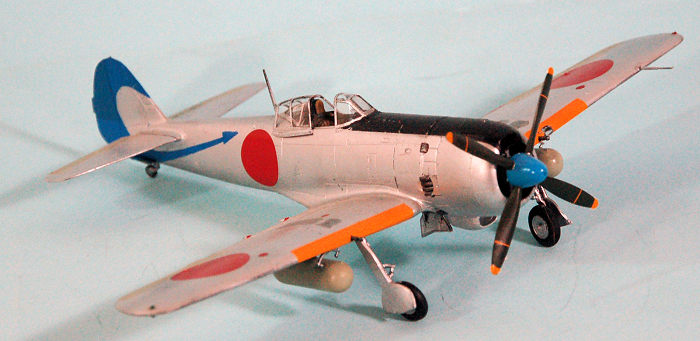 werplant selected was a Japanese Army version
of the Japanese Navy’s NK9A Homare, an 18-cylinder twin-row radial that put out
1,850 horsepower (and would later be found capable of 2,000 h.p. when using
American 100-octane avgas). The pilot was given adequate armor protection for
the first time in any Japanese fighter, and the airplane had a weapon suite of
two 13mm Type 103 machine guns in the upper cowling firing 350 r.p.g. through
the propeller arc, and two 20mm Type 5 cannon in the wings with 150 r.p.g.
Underwing racks could carry either two 550-lb. bombs or drop tanks.
werplant selected was a Japanese Army version
of the Japanese Navy’s NK9A Homare, an 18-cylinder twin-row radial that put out
1,850 horsepower (and would later be found capable of 2,000 h.p. when using
American 100-octane avgas). The pilot was given adequate armor protection for
the first time in any Japanese fighter, and the airplane had a weapon suite of
two 13mm Type 103 machine guns in the upper cowling firing 350 r.p.g. through
the propeller arc, and two 20mm Type 5 cannon in the wings with 150 r.p.g.
Underwing racks could carry either two 550-lb. bombs or drop tanks.
The first prototype was completed in March 1943, and the modifications suggested by the combat-experienced test pilots were incorporated in the fourth prototype that flew that June. The Ki.84 had a top speed of 384 m.p.h. at 21,000 feet and achieved a maximum speed of 496 m.p.h. in a dive from 30,000 feet.
The Homare engine revealed design faults that delayed full production of the engine until April 1944 when a production rate of 100 engines per month was achieved. Engine deliveries would continue to be the main choke point in producing the Ki.84 throughout the war.
The Ki.84-Ia entered limited production in September 1943 and completely supplanted the Ki.44 at Nakajima’s Ota plant in September 1944. The Ki-84-Ia was followed on the production line by the Ki-84-Ib Type 4 Fighter Model Ib, which saw the fuselage-mounted machine guns replaced by a pair of 20-mm Ho-5 cannon, giving the aircraft a total armament of four 20-mm cannon. The Ki-84-Ic was a specialized bomber destroyer variant armed with two 20-mm Ho-5 cannon in the fuselage and two wing-mounted 30-mm Ho-105 cannon. Only a small number of this version were built.
The
Ki.84-Ia entered combat with the 22nd Sentai at Hankow, China in August 1944,
where it proved costly to the U.S. 14th Air Force, and the 23rd Fighter Group in
particular. Even with the Americans now equipped with the P-51B and P-51D
Mustang instead of their older P-40s, pilot quality was the deciding factor in a
combat, and the experienced fliers assigned to the unit gave as good as they
got. While aces like Charles Older, Deputy Commander of the 23rd Fighter Group
could score impressively, such as when he shot down four Ki.84s at low altitude
in a surprise strike at Hankow that September, this was a one-time only event
when he managed to surprise the four fighters shortly after takeoff, catching
them at a disadvantage. Older related t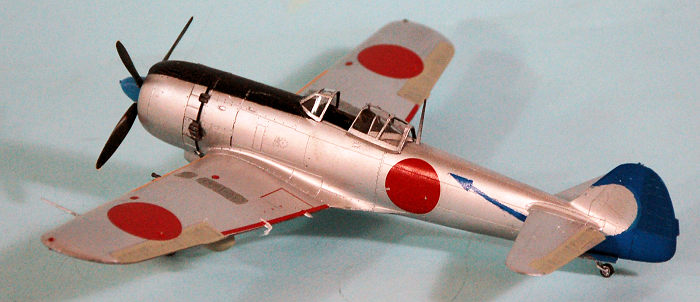 o this writer in an interview in 2002
that he considered the Ki.84 to be the best Japanese fighter of the war, and the
most dangerous opponent he flew against. Other American pilots learned this to
their cost, as the Japanese Army Air Force regained advantage during the
Japanese Army’s final China offensive in the Fall of 1944.
o this writer in an interview in 2002
that he considered the Ki.84 to be the best Japanese fighter of the war, and the
most dangerous opponent he flew against. Other American pilots learned this to
their cost, as the Japanese Army Air Force regained advantage during the
Japanese Army’s final China offensive in the Fall of 1944.
The Hayate was simple to fly, which allowed pilots who had undergone abbreviated wartime training to convert onto it with little difficulty. It was the kind of fighter that could make an average pilot good and a good pilot very good indeed. In flight the controls were somewhat sluggish when compared to the Hayabusa, and the ailerons became decidedly heavy at speeds over 300 m.p.h. Climb was exceptional, taking just less than 6 minutes to attain 6,000 meters. Unfortunately, performance soon varied greatly from aircraft to aircraft, due to slipping production standards as Nakajima’s factories became prime targets for the B-29s of the 20th Air Force and production lines had to be set up in more and more primitive conditions. The problem was particularly bad with the Homare engine, which could vary as much as 200 horsepower from engine to engine as the Musashi factory became the most frequently-bombed target in Japan. Inadequately hardened metal in the landing gear meant it could snap off at any time during landing or takeoff. Combined with the poor brakes, this meant many Ki.84s would be lost on landing despite having suffered no damage in combat.
After proving the fighter over China, the 22nd Sentai joined the similarly-equipped 1st, 11th, 21st, 51st, 52nd, 55th, 200th and 246th Hiko Sentais in the Philippines to oppose the American invasion. While they were formidable foes against the Hellcats, Corsairs and P-38 Lightnings flown by their opponents, the Ki.84's presence in the Philippines declined in importance due to lack of supplies and maintenance problems.
The Ki.84 served in the Okinawa campaign with the 101st, 102nd, 103rd, 111th and the 200th Hiko Sentais. These units provided escort for kamikaze missions and opposed Allied fighters and bombers over Kyushu as well as Okinawa. On April 15, 1945, 11 Hayates of the 100th Sentai made a surprise attack on American airfields on Okinawa in which a substantial number of U.S. aircraft were destroyed, though 8 Ki.84s were lost.
By June 1945, production standards were so poor that the Ki.84 could not meet the B-29 at its operational altitude of 30,000 feet, though it was still dangerous at lower altitudes. Despite this, Hayates were assigned to the defensive role over the Japanese home islands following the end of the Okinawa camapign, operating with the 10th Division responsible for the defence of Tokyo. The units assigned to home defence included the 47th, 73rd, 111th, 112th and 246th Hiko Sentais. Since the Ki.84 was considered essential for the interception role, relatively few were used in Kamikaze attacks.
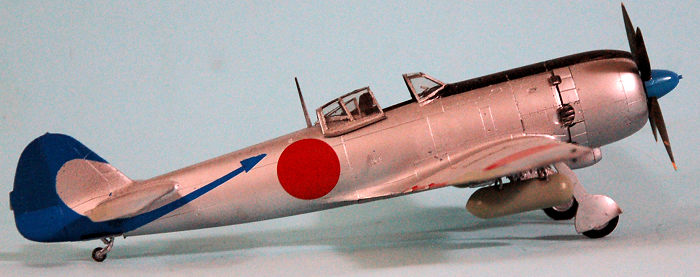 All production of
the Homare at Musashi came to a stop on April 20, 1945 after the great Kobe fire
raid. Production was moved to an underground factory at Asakawa, but the
production rate went downhill every month after. While the Hayate was the most
important Japanese aircraft in terms of production quantities, the lag in engine
production dropped the numbers available, and this was exacerbated by the
destruction wrought on the Hayate’s production line following the first direct
B-29 attack at Ota on February 10, 1945, which was followed two weeks later by
two US carrier air strikes. The damage resulted in a dispersal program that
dropped production to less than 25% of what was needed. Total production by
Nakajima was 3,413, of which the overwhelming majority were the Ki.84-Ia, with
an additional 100 completed by the Manchurian Aircraft Company.
All production of
the Homare at Musashi came to a stop on April 20, 1945 after the great Kobe fire
raid. Production was moved to an underground factory at Asakawa, but the
production rate went downhill every month after. While the Hayate was the most
important Japanese aircraft in terms of production quantities, the lag in engine
production dropped the numbers available, and this was exacerbated by the
destruction wrought on the Hayate’s production line following the first direct
B-29 attack at Ota on February 10, 1945, which was followed two weeks later by
two US carrier air strikes. The damage resulted in a dispersal program that
dropped production to less than 25% of what was needed. Total production by
Nakajima was 3,413, of which the overwhelming majority were the Ki.84-Ia, with
an additional 100 completed by the Manchurian Aircraft Company.
Because of shortages of aluminum, design of the Ki.106 - a wooden Ki.84 - was initiated in 1945, and the prototype flew in July 1945. 600 pounds heavier than the Ki.84, the Ki.106 had a superb finish, which resulted in a lowered climb rate but a top speed only 5 m.p.h less. The end of the war brought further development to a halt. The Ki.116, a further development that changed powerplants to the Kinsei-62 that powered the Ki.100 Hien was 1,000 pounds lighter than the standard Ki.84-Ia and exhibited a performance similar to the Ki.100. This airplane had only just entered initial testing when the war ended.
In 1946, a captured late-production Hayate was restored and tested at the Middletown Air Depot in Pennsylvania. At a weight of 7,490 pounds, using 100-octane avgas, the aircraft achieved a maximum speed of 427 mph at 20,000 feet, using war emergency power. This speed exceeded the P-51D Mustang and the P-47D at that altitude by 2 mph and 22 mph respectively. These figures were not typical of Japanese-operated aircraft during the later stages of the war, but demonstrate the quality and capability of the design.
One Hayate was saved of those brought to the United States for testing, and was restored to flight status in 1968 at the Planes of Fame Air Museum at Chino, California, with test-flying completed by “Bud” Mahurin. The airplane was taken to Japan in the 1970s where it performed in front of large, enthusiastic crowds. Unfortunately, it was left in Japan where it was stored outside and fell into such a state of disrepair that it would be impossible today to restore it to flight status.
| THE KIT |
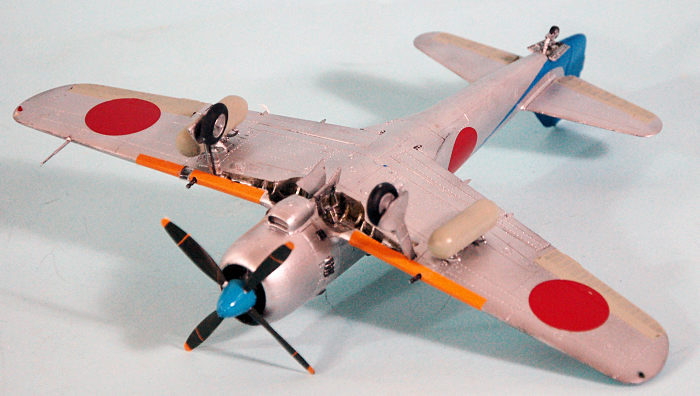 Hasegawa first
released this kit in 1999, and it has been in and out of production with various
limited releases ever since. It is an excellent kit, and was so good that the
1/32 kit is essentially this kit pantographed up. There’s never been any resin
upgrades offered for it because there’s nothing in the kit to upgrade. The
cockpit is well-detailed, as is the engine, and the decals in recent releases
have finally gotten rid of the “ivory white” color that used to distinguish
Hasegawa decals. The only aftermarket item I used was a set of Eduard JAAF
photoetch seatbelts.
Hasegawa first
released this kit in 1999, and it has been in and out of production with various
limited releases ever since. It is an excellent kit, and was so good that the
1/32 kit is essentially this kit pantographed up. There’s never been any resin
upgrades offered for it because there’s nothing in the kit to upgrade. The
cockpit is well-detailed, as is the engine, and the decals in recent releases
have finally gotten rid of the “ivory white” color that used to distinguish
Hasegawa decals. The only aftermarket item I used was a set of Eduard JAAF
photoetch seatbelts.
Since I can resist everything but temptation, when a recent e-mail to newsletter subscribers offered a 4-day sale of Hasegawa kits for an additional 20% off this already-good price, a Ki.84 kit was soon on its way to Le Chateau du Chat.
| CONSTRUCTION |
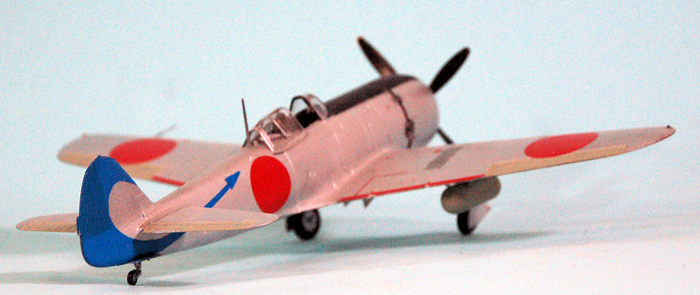 Construction of the
kit is a breeze, due to its outstanding production design. I spent most of my
time prepainting and assembling the engine and the cockpit. The kit assembles so
well that I only used a very little bit of Mr. Surfacer 500 on the centerline
seam and probably could have gotten away with only a light sanding of the seam
without use of filler.
Construction of the
kit is a breeze, due to its outstanding production design. I spent most of my
time prepainting and assembling the engine and the cockpit. The kit assembles so
well that I only used a very little bit of Mr. Surfacer 500 on the centerline
seam and probably could have gotten away with only a light sanding of the seam
without use of filler.
The kit is designed for the flaps to be assembled deployed, as is the case almost all the time with dropped flaps on a model. Other modelers have pointed out that to get the flaps properly positioned if you want them raised, you need to cut out and remove the area of the lower wing where they fit. I did this and had no problem attaching the flaps in the closed position.
| COLORS & MARKINGS |
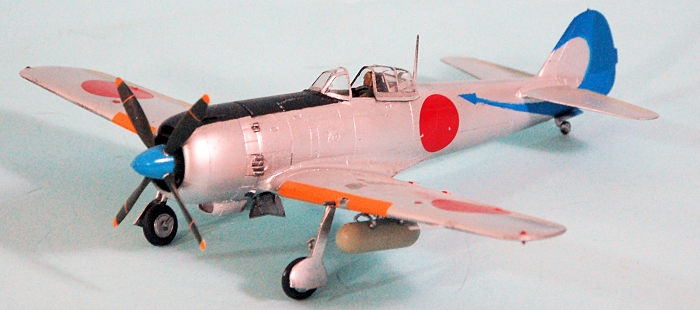 I opted to do this
Hayate the same as I did the 1/32 kit back in 2005, that is now on display out
at Planes of Fame. After first pre-shading and painting the fabric control
surfaces with Tamiya XF-14 JAAF Grey, I painted the model overall with Tamiya
X-18 Semi-Gloss Black as a primer, then masked off the anti-glare panel, and
painted the model overall Vallejo Aluminum. I used Vallejo Duraluminum and White
Aluminum brush-painted on various panels to break up the monotone finish.
I opted to do this
Hayate the same as I did the 1/32 kit back in 2005, that is now on display out
at Planes of Fame. After first pre-shading and painting the fabric control
surfaces with Tamiya XF-14 JAAF Grey, I painted the model overall with Tamiya
X-18 Semi-Gloss Black as a primer, then masked off the anti-glare panel, and
painted the model overall Vallejo Aluminum. I used Vallejo Duraluminum and White
Aluminum brush-painted on various panels to break up the monotone finish.
The 29th Sentai tail marking was made from a sheet of Blue decal. The rest of the decals were from the kit, including the yellow wing leading edge markings; these went down easily and only needed a very little bit of Micro-Sol at the end of the process to insure they melted into the panel lines.
I unmasked the anti-glare panel and the canopy, gluing the sliding section in the open position. I attached the landing gear and the drop tanks, which I had painted with Tamiya XF-14. With the prop attached, I declared the model finished.
| CONCLUSIONS |
This Hasegawa kit is still the definitive Ki.84 in 1/48 scale. The kit is very well-designed and presents no difficulty for any modeler, with a very nice result pretty much guaranteed for anyone who takes their time. Still highly recommended.
| REFERENCES |
10 October 2019
Copyright ModelingMadness.com
If you would like your product reviewed fairly and fairly quickly, please contact the editor or see other details in the Note to Contributors.
Back to the Main Page Back to the Review Index Page Back to the Previews Index Page